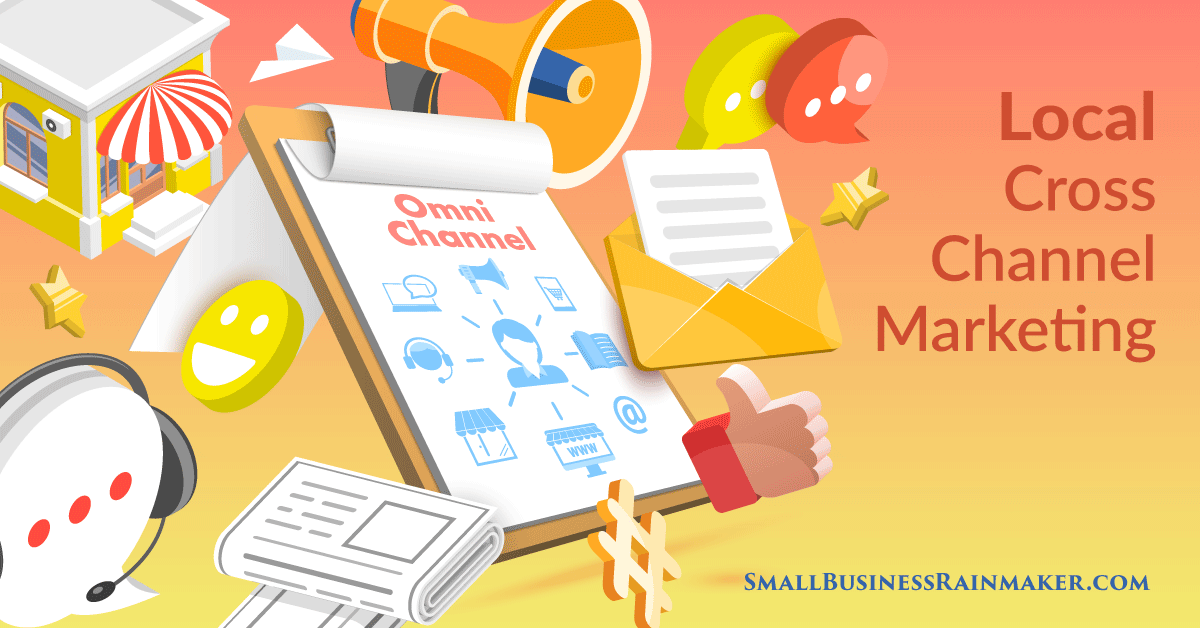
Whether you're a new or well-established small business, you have some kind of marketing strategy going ... even if it's only a haphazard word-of-mouth effort.
If you have no marketing plan in place, your business is likely stagnating or decreasing or dying.
Chances are you'll improve your marketing efforts if you learn more about marketing itself and begin embracing some of the marketing opportunities and channels available to you.
One of the things we've seen at Small Business Rainmaker is a serious mistake too many local businesses make: the lack of diversity in marketing channels.
They settle on one mode of marketing and stick with it, no matter how well it does (or doesn’t) work. And all too often they completely neglect any online marketing.
When the pandemic hit, this misstep brought a significant negative impact to local businesses.
Brick-and-mortar companies with little or no online presence suffered greatly because, with the doors shut or limited customer access allowed, they had little to no avenues for income open to them.
They were forced to play expensive catch-up or shut down entirely.
By not heeding the "Parthenon principle" and building a firm business foundation with various marketing pillars, they left themselves on shaky ground. Here’s how Small Business Rainmaker's Andre Palko describes it:
"The more pillars you have to support your marketing efforts, the safer you are against competition big or small. If you have ten pillars and one is knocked out, your building still stands. If you have only two or three pillars and lose one, you’re in trouble. And if you have one marketing pillar to support your business, it can put you out of business."
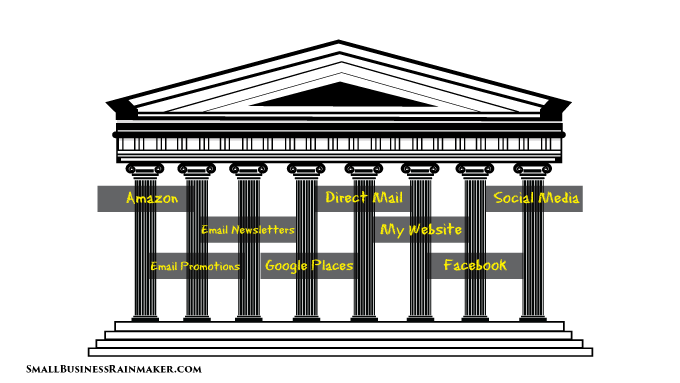
Why Cross Channel Marketing Is Essential for All Local Businesses Today
Having a robust cross channel marketing strategy in place – with several pillars – could be a preemptive safeguard against threats as severe as even a pandemic.
Also according to Palko:
“Cross-channel marketing is the coordinated use of multiple media to deliver brand messages to the consumer as well as provide multiple methods of purchase and customer service. It’s also referred to as omni-channel marketing or multi-channel marketing.
The underlying concept is that your ideal customer might only see your message on the one or two channels they use, while another might use entirely different platforms. Each might also have different preferred methods of shopping.
By smartly focusing on all the channels where your target customers might be, you get your message to a bigger audience. It also ensures that their journey to becoming your client is smooth and fits into their needs, as does their customer experience afterwards.”
If your local business marketing strategy isn't built around a "click and mortar" approach – a physical store with an online presence – the pandemic probably did serious damage to your sales numbers.
Conversely, for businesses that are strictly ecommerce, don't neglect offline marketing efforts to supplement your online marketing.
You'll see options for both online and offline channel marketing in the list coming up.
Offline vs. Online Cross Channel Marketing
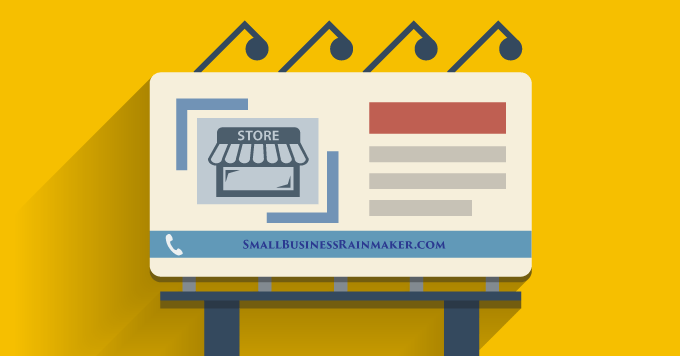
Offline (or Traditional) Marketing
Offline marketing includes magazines, newspapers, TV, radio, catalogs, SMS marketing, billboards, fliers, and the like.
Benefits of this kind of marketing, according to digital marketing content writer Hazel Ann Westco, include:
Local Audience Reach
Traditional marketing can be a great option for targeting local audiences. One of the most efficient ways of reaching thousands of people is by broadcasting on TV or playing an ad on the radio. A more cost-effective way is by printing and distributing flyers to potential customers.
Accessibility
Digital ads require a stable internet connection. Traditional ads like flyers or posters, on the other hand, can be kept and brought anywhere, anytime.
Easily Understandable
Traditional ads are simple and straight to the point, making the message easier to understand for some consumers. All a person needs to do is view a poster and read the details to understand the message. Digital ads like videos, for instance, may take some extra time for some people to process.
Better Recall
Studies show that traditional forms of marketing are easier for a customer to process and recall because of their tangible, high-impact way of getting a message across. The digital world is, after all, already saturated with too much content. That makes it harder for online ads to make an impression.
Online (or Digital) Marketing
Online marketing methods include content marketing, social media, SEO, link building, etc.
Benefits, again according to Westco, include:
Immediate Results
Almost everything that happens on the internet takes place in real-time. When you start an ad campaign online, for example, you can immediately see who interacted with the ad. Traditional marketing methods, on the other hand, take time to truly measure performance.
Measurable Ad Performance
Most digital platforms use tools like Google Analytics to measure how effective an ad is. This is important for marketers who want to make the most of their campaign. Knowing what works and what doesn’t can help you decide how to tweak your campaign for better results.
Trackable Customer Behavior
More than 80% of shoppers conduct research online before pushing through with a purchase. As a result, you can align your marketing strategy with customer behavior to build a more engaged community.
Learn the Basics for Online Marketing First
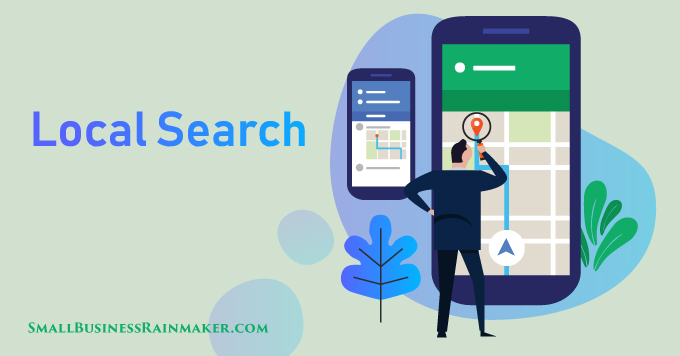
To do online marketing well, you need to have at least a basic understanding of Search Engine Optimization (SEO), which includes understanding the right keywords to use across your content marketing. In some cases, it may be wise to hire an SEO firm to help you with this.
Check out the Local Business SEO Guide by Justin Rashidi, a Partner at digital agency SeedX, which includes how-to’s for:
On-Page Optimization
- Website Titles
- Meta Descriptions
- Website Content
- Mobile Optimized
- Website Speed
- Contact Page
Off-Page Optimization
- Claiming your Google My Business Listing
- Getting Reviews
- Creating Citations
- Creating Backlinks
In the Guide, you'll also find an extensive list of resources for further information.
The Various Online and Offline Marketing Channels for Your Local Business
- Social media channels (Facebook, Twitter, Instagram, LinkedIn, Reddit, Snapchat, YouTube, Tumblr, Google My Business)
- Live events
- Virtual events
- Webinars, live and recorded
- Branded merchandise
- Word of mouth
- Website
- Ecommerce – build your own platform or use “theme template” platforms like Shopify, Square, Wix or Big Commerce
- Blog
- Direct Mail
- Newspapers
- Television
- Radio
- In-Person sales
- Brick-and-mortar locations
- Amazon, eBay, Walmart, Newegg
- Press releases
- Local business directories
- HARO (HelpaReporterOut.com) – more about this below
- Phone calls
Are you surprised by how extensive the marketing opportunities available to you are? And many of them are free.
It's great to have so many options and choices, but that can cause overwhelm.
Should you try your hand at all of these channels at once and learn as you go? What's the best approach?
Small Business Rainmaker's Andre Palko says:
"The key is to start by focusing on ONE primary channel, supported by a few secondary channels. For instance, with local businesses, Google My Business is often the best place for a primary focus when trying to get local visibility. Then, depending on where your customers are, it can be supported by Facebook or LinkedIn, local directories, and the company website.
For example, I’ve used postcards to drive traffic to a webinar and then to the shopping cart. I’ve used catalogs given out at trade shows, followed up with a direct mail series, plus simultaneous follow up with a regular email newsletter, then with phone calls, then with email and direct mail post-purchase."
I want to call your attention to an outlet for both online and offline content marketing that you may not be aware of:
HARO (Help a Reporter Out)
Want to get free publicity for your local business in all kinds of national and international publications?
HARO boasts more than 55,000 journalists and bloggers using their platform to find sources. Many of them are from major news outlets.
Here's what happens when you sign up to be a source on HARO:
Journalist members send in story ideas to HARO, which in turn approves them and sends them out blind in three daily emails to people like you who have signed up to be a source.
You peruse the list of dozens of story ideas you receive three times a day and respond to the ones for which you have something to say.
If the writer gets in touch with you, you may have the opportunity to write or tell them your story, which the writer may decide to include in their article. You'll also provide them a brief bio that will be included with your contribution to their story. So your name, your company name, and the products and services you offer show up in places like Forbes, the NY Times, and many, many lesser known, but important, publications.
How to Build a Cross Channel Marketing Strategy for Your Local Business
Online Cross Channel Marketing Ideas
If you're just starting out with social media marketing, you'll need to do some initial investigative work to find out where your target audience spends the most time online. Those are the platforms where you should be spending the most time, too.
I'm assuming that you've already identified who your target audience is. If not, that's step one, before diving deeper into social media.
And keep these things in mind as you manage your social media activity:
Quality over quantity in your content creation and publication.
It's okay if you can't post long-form content online (on your blog, website, etc.) any more often than a few times a month. Make sure you provide compelling content that makes people want more. Go for quality writing every time.
Set up a social media calendar.
Once you determine the posting frequency for your various online channels, take time regularly to plan in advance which content to post where. And make note on your calendar of any important dates that you will post special content for. Use a platform like PostPlanner or Hootsuite to set up recuring posts on social media.
Here are some more articles to help you get a better handle on using social media:
How to Create a Social Media Presence that Commands Instant Attention
Top Reasons Companies Invest in Social Selling
How to Grow Your Local Facebook Audience Through Story-Based Posts (With Examples)
How to Use Content Marketing to Improve Your Social Media Presence
How to Do Digital Marketing in Your Small Business
Offline Cross Channel Marketing Ideas
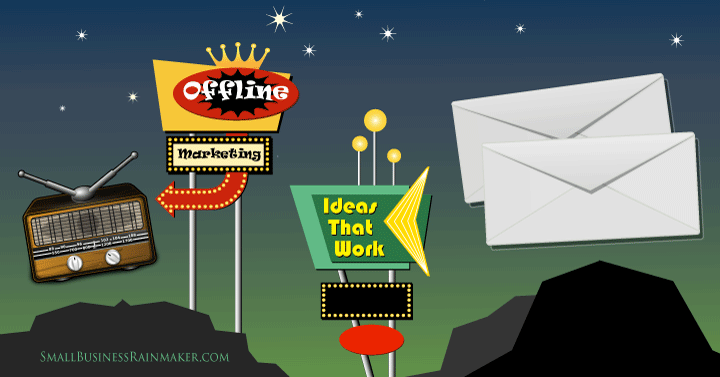
Australian blogger Liam Smith wrote about several offline marketing ideas you may not have considered:
Turn to the radio
Offline marketing doesn’t have to always imply tangibility. The radio is still a highly effective method of advertising. People listen to music all the time and turn to their favorite radio stations for news and information, as well. What’s more, radios are interesting for their talk-shows and new music premieres. The trouble might be reaching younger generations through the radio.
Place your ads in the same ad space
Most people think that changing where they advertise will help them generate new leads. The thing is, with so many ads out there today, yours might go unnoticed if you keep switching ad space. Consider placing your ads in the same place. After a while, they’ll be noticed, even if it's only on a subconscious level. Just because people aren't paying active attention to your ad doesn't mean they're not receiving your message over time.
Strategic outdoor placement
Using big, available outdoor surfaces is still a great offline marketing idea. You may think that the town is full of ads and that people don’t notice them anymore, but that’s simply not true. Strategic placement is the key to making this idea truly worthwhile and effective. In fact, according to statistics, 7 out of 10 consumers make shopping decisions while commuting.
Word-of-mouth (WOM) Marketing
Word-of-mouth marketing packs the biggest punch when it's used in both the offline and online worlds.
As the name implies, WOM refers to the spread of information and news about products, businesses and services via word-of-mouth.
Online marketing manager Ellie Richards offered some tips to improve your offline WOM marketing:
New product sampling
You can take advantage of offline outreach at restaurants, bars, parties, and other social events through new product sampling. By offering product samples, you can increase exposure and provide potential customers with the opportunity to get a taste of your product and leave them wanting more of it. If they like it, they will definitely share their thoughts and impressions with their friends and family members.
Customer relationship management programs
You can also generate positive offline WOM by introducing a sound customer relationship management program. For example, by adding a personal touch to your customer contacts, you can enhance the experience of your customers and contribute to their satisfaction with your goods and services. Satisfied customers will always be your brand advocates who spread positive WOM.
Using offline and online WOM in collaboration
Perhaps, the most valuable piece of advice that can be given is to ensure that your offline and online WOM approaches and practices play hand-in-hand. A large share of face-to-face conversations is driven by online content. Therefore, it is important to ensure that a company’s cross-channel marketing strategy is designed with a holistic consumer conversation and sharing approach in order to maximize its effectiveness and gain a competitive edge in the market.
Live Event Marketing and Sponsorship
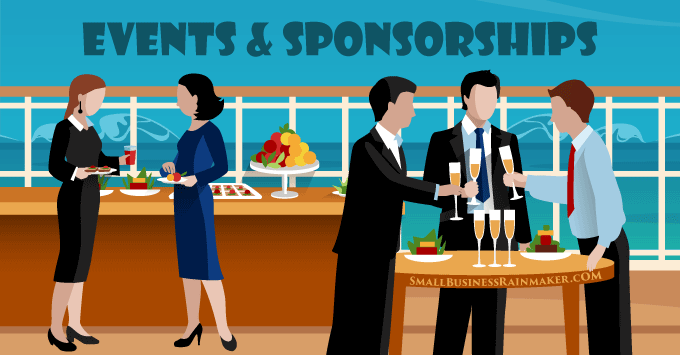
Digital marketing manager Dawn Ellis noted the two forms of live events: third-party and self-hosted, and described the advantages of each:
Third-party events
These events are hosted by a third-party company or organization who will offer brands a chance to rent space, take a stand, or sponsor all or part of the event. Third-party events include conferences, exhibitions, and trade shows.
Advantages
Credibility – As third-party events tend to have an overall theme, they attract key figures from similar industries. By participating in relevant third-party events, you will position yourself as a key figure, helping to strengthen your reputation.
Awareness – By participating in third-party events, you’re bringing your products or services to your target market, increasing visibility and brand awareness.
Sale leads – As attendees are interested in the overarching theme of the event, they are more likely to be a potential customer and purchase from your brand.
Research – Third-party events provide an effective platform to launch or test a new product and gather opinions from like-minded people. They also offer a chance to learn about the industry and keep tabs on competitors.
Self-hosted events
These are corporate events that you host and are responsible for organizing and managing. Depending on your business and target market, this could range from a promotional marketing tour to a hosted dinner for VIP customers or a training day for delegates.
Advantages
Effective – Self-hosted events are more effective than third-party events in terms of generating revenue, as attendees are aware of your brand and products or services.
Full control – As you know your invitees, you have full control over the event and will be able to touch base with attendees before, during, and after the event.
Sales – As well as targeting your existing customer base, customers will be able to bring new prospects to the event, who will be more likely to convert and make a purchase.
Charlotte Manzi, Project director at BlueInk Event Management, described six types of self-hosted events to revive interest in your brand:
VIP Experience
VIP experiences include a wide range of programs—from exclusive invitation-only luncheons to rare skydiving events. To make the most out of it, make sure that the VIP event is relevant to your brand or company niche.
Conferences
Much like trade shows and exhibits, business conferences offer your firm a chance to promote products and services while offering the attendees with additional knowledge they can use for their respective businesses (for B2B).
Workshops
Like conferences, workshops serve as a means for your clients to get additional information and industry-specific knowledge. The key difference between the two, however, is that the speaker will come from your company to establish your brand as an authority in the industry.
Networking Sessions
Unlike conferences and workshops, networking doesn’t need a speaker or influencer. You just need to offer your already-loyal customers a venue and an incentive for bringing in clients as their referrals.
Contests
This tactic is best used by business-to-consumer firms. Just think how well you can sell running shoes by organizing a fun run or a surfboard by conducting a surfing competition.
Interactive Trade Expo Events
This strategy can be categorized under the so-called “experiential marketing.” As the name suggests, this tactic involves allowing consumers to try out your product or service firsthand to let them experience the benefits of choosing your brand.
Sponsorship Gets Speedy Results
Former sponsorship strategist Audrey Ryan offered four reasons why sponsorship gets quick results:
Guaranteed Reach
An offline sponsorship is guaranteed to reach the audience, whereas, in other forms of PR, the media may not pick up the story the first time around. It could take several attempts and cost more in the process. If you sponsor an event, you’ll gain access to a public following that exists and often a membership base.
Instant Credible and Relatable Consumer Perception
Brands use sponsorship to influence public perception more rapidly than other mediums because it leverages the power of collective credibility. According to a recent study, 74% of respondents said engaging with brands at events and live experiences makes them much more likely to buy their product.
Multiple Exposure Points
A lot of sponsorships come in the form of a package that might include signage, branded giveaways, experiential activities, press, and social media mentions. The package offers multiple opportunities for the brand to engage the audience across different mediums which breeds familiarity and positive feelings by repetition.
A Mecca for Content Creation
If you’re looking for a way to supply your marketing and PR initiatives with content, sponsorship delivers in buckets. Brands often use a sponsorship platform to create and capture content that amplifies the reach of marketing and PR efforts. From a single sponsored event, you can gather footage for YouTube, audience feedback through surveys and testimonials, material for blog articles or podcasts and more.
Branded Merchandise
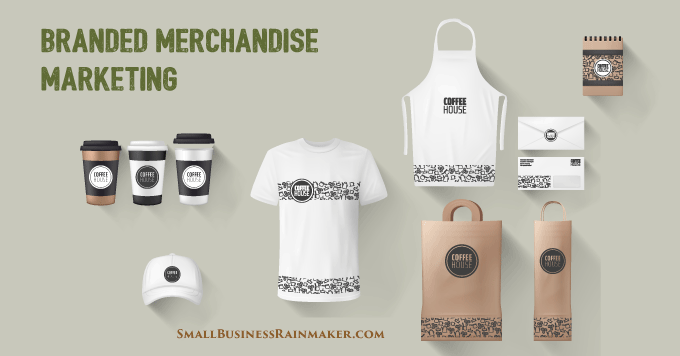
We've all seen branded apparel and items such as pens, key fobs, and even shopping bags displaying company logos and taglines as a means of advertising.
Michael Deane, editor of small business magazine Qeedle, described some of the many benefits of such branded merchandise for business growth:
It Reaches Farther
Exclusive merchandise “sweetens the pot” by giving potential customers a physical object that will remind them of your business and your product, long after they’ve seen an actual ad or heard your pitch. That kind of reach cannot be replicated in any other way.
It Establishes a Connection
Branded merchandise almost guarantees retention and brand loyalty, especially if the merchandise is delivered in a way that makes the customers feel rewarded for their loyalty to your company. They are seen as tokens of gratitude, and a sign of the company’s care and thoughtfulness.
It’s Cost Effective
In the long run, bulk-buying branded merchandise is much cheaper than, say, paying for advertising space online, or a time slot on TV or radio. What’s even better, the average customer perceives it to be much pricier than it actually is.
It Combines Online and Offline Marketing
There are simply no limits to what you can do with promotional material. Possibilities include:
- Offering branded merchandise to those who sign up for your newsletter or after a purchase;
- Rewarding returning customers or referrals;
- Handing out merchandise for every milestone website visit;
- Joining forces with social media influencers who can organize giveaways.
It Determines a Company’s Style
Nowadays, the merchandise you choose goes beyond tote bags, caps and t-shirts. They have become household items, practical objects that serve a certain purpose and even make a statement. When deciding on what kind of promotional material to buy, you have to consider your target audience’s age, backgrounds and lifestyle. What’s more, think about the kind of style and voice you’re setting with your brand.
It Makes You Stand Out
Art, video game, and comic book conventions might be the best example of how branded merchandise helps you stand out. Since they’re in the creative industry, it’s only natural that you’ll find an abundance of colors, shapes and sizes at the venue. Which is why they’ve learned to design their banners and stands in such a way that they immediately draw the crowd’s eyes to their business.
It Gives a Sense of Exclusivity
Certain promotional objects invoke exclusivity. People who own the time-exclusive merchandise (and wear it) can easily see themselves as a part of a group, or a club, even more so if your company has a snazzy-looking logo design. And if it’s an object they can’t get anywhere else, then it’s all the better.
Direct Mail and Print Marketing
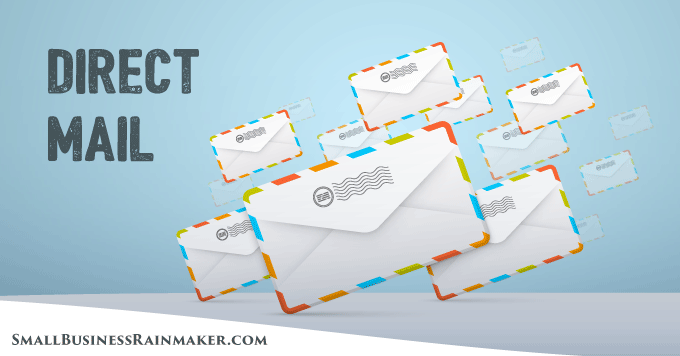
Here are some articles to help you with direct mail and print marketing:
A Direct Mail Technique that Can Double Your Response Rates?
Print Marketing: Still a Great Way to Advertise Small Local Business
Does Your Custom Product Packaging Cover All These Basics?










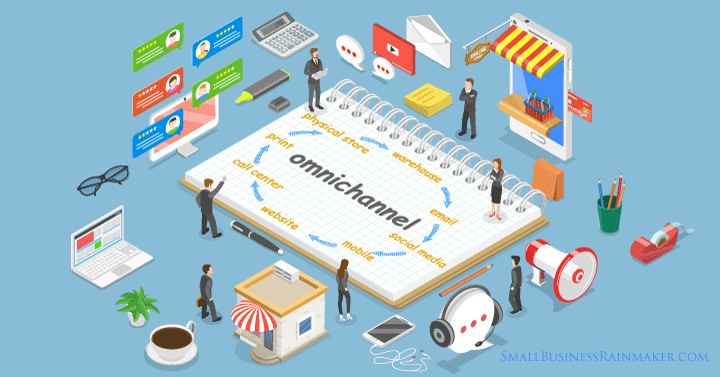

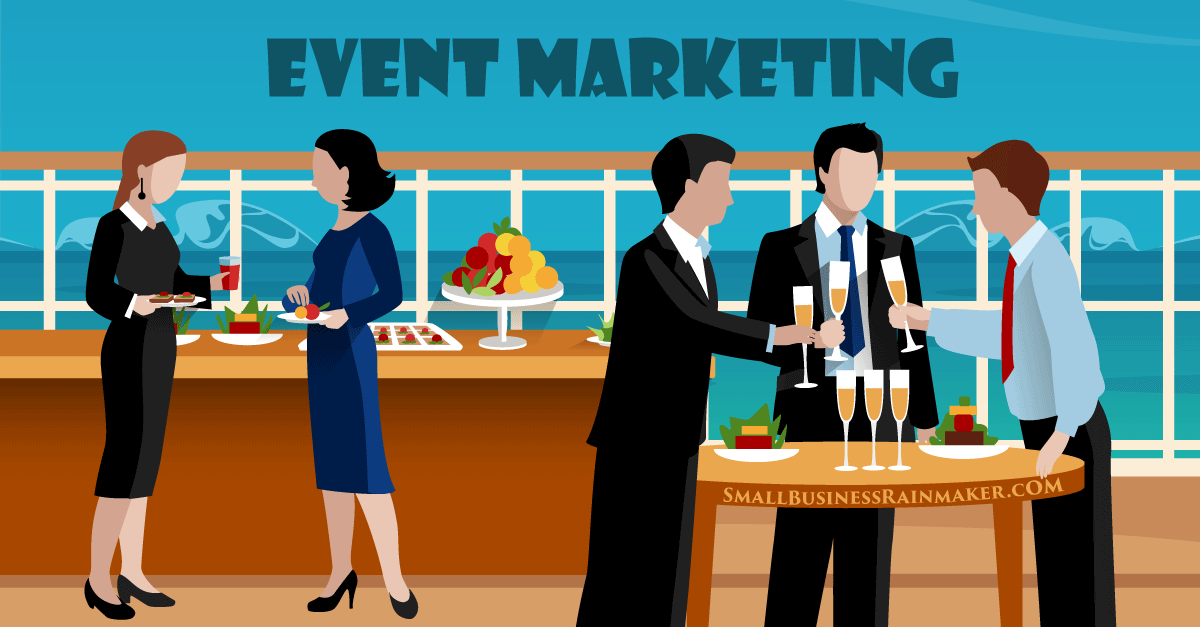


Leave a comment